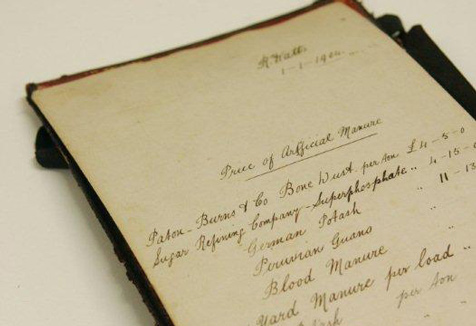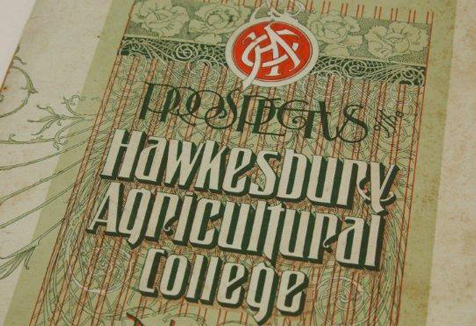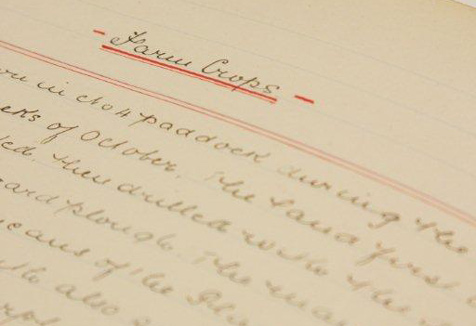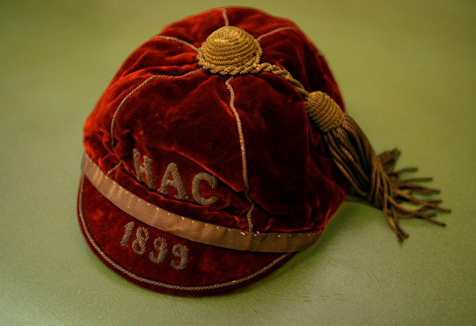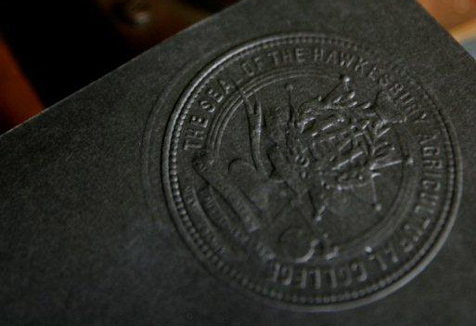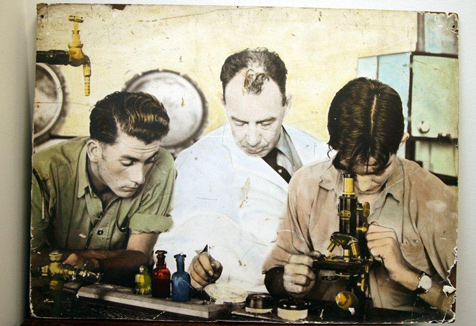A genealogists dream: UWS preserves Hawkesbury’s student history
A gallery of selected archives courtesy of RAMS.
More than eighty years of Hawkesbury Agricultural College (HAC) history has been rescued from obscurity by the University of Western Sydney’s Records and Archives Management Services (RAMS).
From 1891 until the early 1970s, the HAC manually recorded student details on small cardboard index cards. Over the years, the College amassed 6902 of these ‘student cards’ before switching over to a microfiche system in the 1970s.
These small, yellowing, handwritten student cards were stored for decades in alphabetically-ordered metal filing cabinets within Building M2 at the Hawkesbury campus – until the RAMS team stepped in and sought to make the records more accessible for future generations.
Derek Temple, a Records Officer from RAMS, spent more than 18 months in between his ‘regular’ duties manually inputting the data. Work is now well under way, scanning and uploading images of each student card, into a new online archive.
“The actual task was menial, but the result was really rewarding. This is the sort of work that we really enjoy when working with archives,” says Mr Temple.
“The biggest challenge was reading the handwriting – many of the cards were written in a small, scrawling script and with inkwell and fountain pens. Ensuring that each record was accurately interpreted was very difficult and time consuming.”
Now that each student card has been uploaded into the online archive, the RAMS team can retrieve and browse individual records for HAC students with the click of button.
Cathie Lester, University Archivist from RAMS, says it is clear from the content of the cards, and the meticulous way that they were updated, that HAC staff and students formed a very close community.
“The cards provide a wealth of detailed information on the colourful lives of the HAC students, and what it was like to live and study on the grounds that are now the UWS Hawkesbury Campus,” says Ms Lester.
“The early students built a lot of the original buildings and cleared the land where the campus still stands. They lived together, and came back in the holidays to tend to the animals.
“The HAC really was like a family, and the students often wrote-in to notify the College of any developments in their lives. Some of the student cards have pages and pages of extra detail, with scrawled notes, newspaper clippings, and even obituaries.”
For a genealogist, Ms Lester says the HAC student records may be an invaluable source of local information.
“For anyone who is researching their family histories, the cards may offer much more than their ancestor’s course details, grades and graduation status,” she says.
“Even if a student finished their studies in 1898, the data may have been updated until 1970. In some cases, the information spans the students’ entire lives including marriages, children, addresses, and war service.
Mr Temple says the most rewarding part of the indexing process was uncovering some of the fascinating stories hidden within the student records.
“There was a student who was killed by lightning and another other who was expelled for riding a horse while under the influence of alcohol. One HAC student went on to commit a double murder in Sydney,” says Mr Temple.
The murderer, one Thomas Butler La Barte, studied for a ‘Piggery Special Certificate’ at HAC in 1911. Newspaper clipping attached to his record indicate that he went on to fatally shoot his wife as well as a Police Constable attempting to secure his arrest in 1920.
In addition to the infamous, the student cards have also lead to the identification of a few local heroes and celebrities of the time.
The sons of Prime Ministers, Billy Hughes and Edmund Barton, were once students at HAC, as was a member of the Yates gardening family; several members of the Lindeman wine-making family; and the son of Henry Lawson. The cards also identified 11 servicemen in the Boer War, 100 in WWI – including the WWI “fighter ace” Jerry Pentland – and 600 in WWII.
Another noteworthy former student is Andrew ‘Boy Charlton, who represented Australia at three Olympic Games. Charlton was already a well-known swimmer when he enrolled at HAC in 1923. He left the College in 1924 to attend the 1924 Paris Olympics where he was dubbed ‘The Escaped Torpedo’ after breaking the 1500 metre world record.
According to his student card, Charlton had a more natural inclination toward swimming than he did farming. A newspaper clipping attached to his file states that Charlton found the academic aspects of the course “not entirely to his liking.” Charlton’s record also states that he was granted admission to the Agriculture I course on a probationary basis after failing his entrance exam.
The University welcomes anyone with an interest in genealogy, whose family tree may benefit from searching the HAC archives(opens in a new window), to make contact with the RAMS team.
Due to privacy reasons, only records more than 70 years old are available for general public access. For more information, contact Cathie Lester on c.lester@uws.edu.au
Ends
8 July 2013
Photos: Sally Tsoutas and RAMS
Words: Danielle Roddick
By submitting a comment you acknowledge you agree with the Terms and Conditions.
Mobile options:

